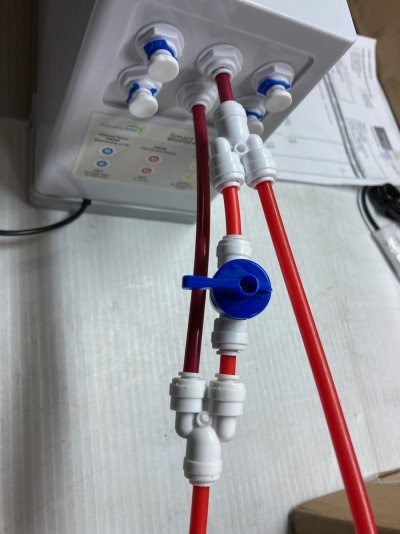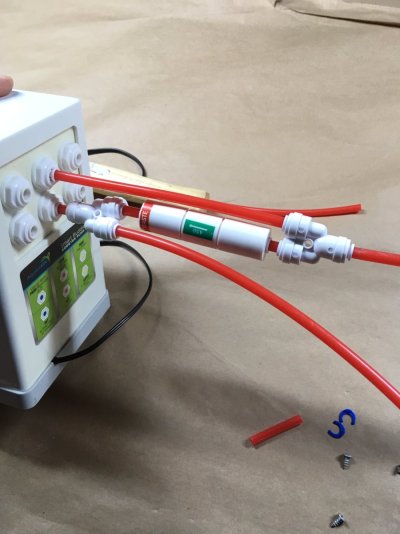I've installed the smart buddie 150 GPD version with two NEW 75 GPD Dow membranes, run in parallel.
After over 24 hrs of running, I get 13 TDS, even tho my tap water TDS is 310.
The booster pump is pushing about 75 PSI into the membranes.
Paradoxically, my old 100 GPD membranes in this parallel setup with the smart buddie yield 9 TDS. Suggesting this is not an insufficient pressure issue.
I'm no expert, but the only potential problem that pops into my head is the size of the flow restrictor.
I'm attaching a picture of my setup.

Thank you very much for the help.
After over 24 hrs of running, I get 13 TDS, even tho my tap water TDS is 310.
The booster pump is pushing about 75 PSI into the membranes.
Paradoxically, my old 100 GPD membranes in this parallel setup with the smart buddie yield 9 TDS. Suggesting this is not an insufficient pressure issue.
- My parallel setup has the pre-filtered tapwater from the booster pump split into two using a Y-fitting, with each going into one of the two membranes
- The waste water from the two membranes is combined into a single waste line using another Y-fitting, and then routed into the smart buddie.
- The pure water from the two membranes is also combined into a single line using a Y-fitting, and then routed into the smart buddie.
- I've checked correct membrane placement in the membrane housings three or four times.
- I've checked the pressure gauge
- I got the same tds reading from two different tds meters.(The handheld tds meter has just been calibrated with a standard solution)
- I've checked that all the RO tubes are going to the corrected places.
I'm no expert, but the only potential problem that pops into my head is the size of the flow restrictor.
I'm attaching a picture of my setup.
Thank you very much for the help.











